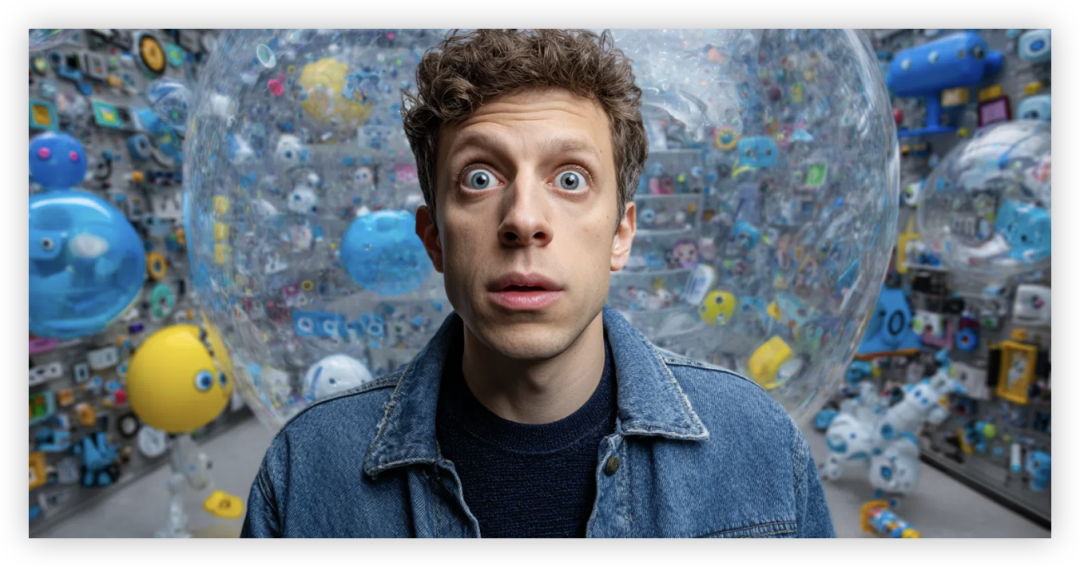AI Bubble Theory: OpenAI CEO's Warning and How Should We View It?

In today's surging tech wave, artificial intelligence is undoubtedly the star at the forefront. Whether it's daily office work, email writing, or solving life's small problems, AI is penetrating every aspect of our lives at an astonishing speed. Countless companies are spending lavishly, afraid of missing this high-speed train. However, amid this seemingly prosperous scene, a "discordant" voice has quietly emerged — from OpenAI's CEO Sam Altman, who frankly stated: the AI market is in a massive bubble.
These remarks undoubtedly pour cold water on the hot AI market and also make us think deeply: Is AI a once-in-a-century technological revolution, or a capital bubble about to burst?
Sam Altman's "Bubble Theory": A Historical Warning?
Altman was blunt in his interview with The Verge: "We are in a massive speculative bubble." He affirmed AI's value as "the most important thing in a long time," while also acknowledging that investors are "generally overexcited" about AI. This sober awareness inevitably reminds people of the internet bubble in the late 1990s.
Back then, the internet, like today's AI, was seen as the key to opening a new era. Capital poured in frantically, countless telecom networks sprang up, and internet company valuations soared. However, when these companies couldn't sustain profitability, the bubble burst dramatically, and many companies vanished into thin air. Altman pointed out that today's AI market is strikingly similar: data centers play a role similar to telecom infrastructure, while AI startups are like the internet darlings of yesteryear. Investors' commitment to AI has reached unprecedented heights, even willing to heavily bet on companies that haven't proven their profitability. This phenomenon is undoubtedly a typical characteristic of bubble formation.
The Risk of Bubble Burst and Universal Concerns
Altman's warning is not isolated. Industry giants like Alibaba co-founder Joe Tsai and Bridgewater founder Ray Dalio have also issued similar warnings. Apollo Global Management's chief economist Torsten Sløk even stated bluntly in a report that the current AI bubble might be larger than the internet bubble back then. This means that once the bubble bursts, the impact and losses could be even more profound and severe.
This concern is not unfounded. When markets excessively chase concepts rather than focus on actual value creation, risks quietly accumulate. Once there's a huge gap between expectations and reality, or funding chains break, market confidence collapses, potentially triggering a domino effect.
Rational View: Sticking to Value and Proceeding Cautiously
Of course, not everyone is pessimistic about AI's future. Futurum Group researcher Ray Wang is relatively optimistic. He believes that while Altman's point is valid, AI's ultimate direction largely depends on each company's own strength and core competitiveness. He emphasizes that the fundamentals of the AI supply chain remain solid, and AI's long-term development trajectory is sufficient to support continued investment.
This view reminds us that maintaining clarity amid frenzy is crucial. AI technology itself undoubtedly has disruptive potential, but investment and entrepreneurship need to return to business fundamentals. Those companies with solid technology, clear business models, and the ability to continuously create real value are more likely to survive after the bubble bursts and ultimately become industry leaders.
Altman's warning is not to make us lose confidence in AI, but to remind us to maintain a "down-to-earth" attitude. Don't be carried away by overly exaggerated future promises, be wary of blind following, and examine those "tomorrows" that haven't been delivered. AI's future is unlimited, but the path to the future requires cool thinking, rational investment, and continuous innovation. Only then can we truly harness AI as a "thousand-mile horse" rather than being swept away by it.
Conclusion
The AI market is at a critical crossroads. It is both a "starry sea" full of unlimited possibilities and may hide turbulent "bubble undercurrents." Sam Altman's frankness provides us with valuable perspective, prompting us to re-examine AI's value and risks. As observers and participants, we should remain vigilant, distinguish truth from falsehood, and keep our eyes on the long term. Only then can AI truly move from concept to application, from bubble to prosperity, and ultimately become a powerful engine driving human social progress.
分享文章
3篇相关文章
Can ChatGPT Create New Coronavirus? OpenAI Worries AI Will Invent Viruses!
2025-07-07
OpenAI issues a shocking warning: future AI models may empower ordinary people to create viruses. Is this an overreaction, or the true test of AI's double-edged sword?
Genies and Unity Join Forces: AI Avatars and UGC Tools Ignite the Future of Game Development
2025-07-11
Genies and Unity team up: AI avatars and UGC tools are set to revolutionize game development and usher in a new era of personalized gaming.
Bombshell! Hugging Face Launches 9 Free AI Courses—Your AI Superpower Upgrade Channel Is Open!
2025-06-27
Hugging Face has launched 9 free AI courses covering LLMs, Agents, Vision, Gaming, Audio, 3D, and more cutting-edge fields. Free, open-source, and highly practical—helping you master AI skills fast!